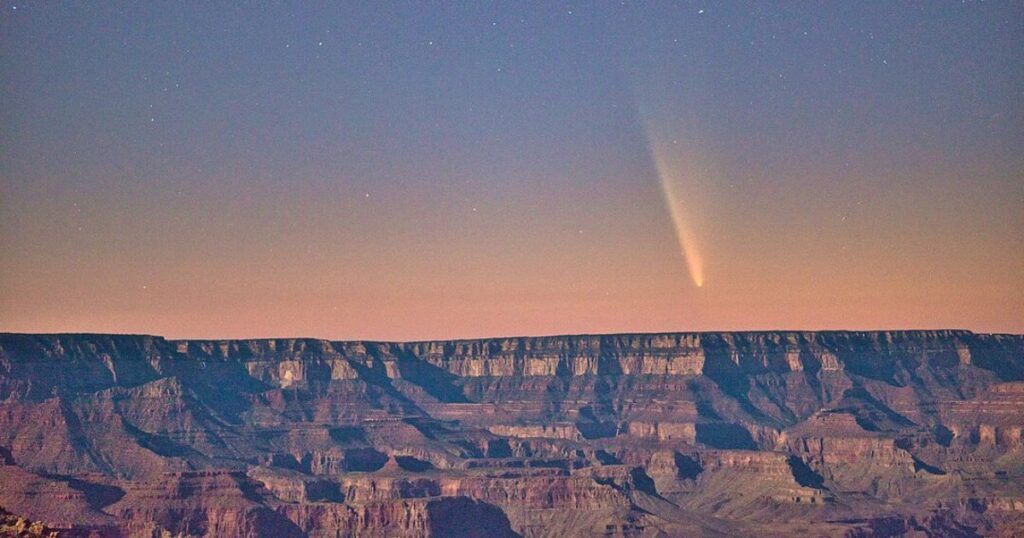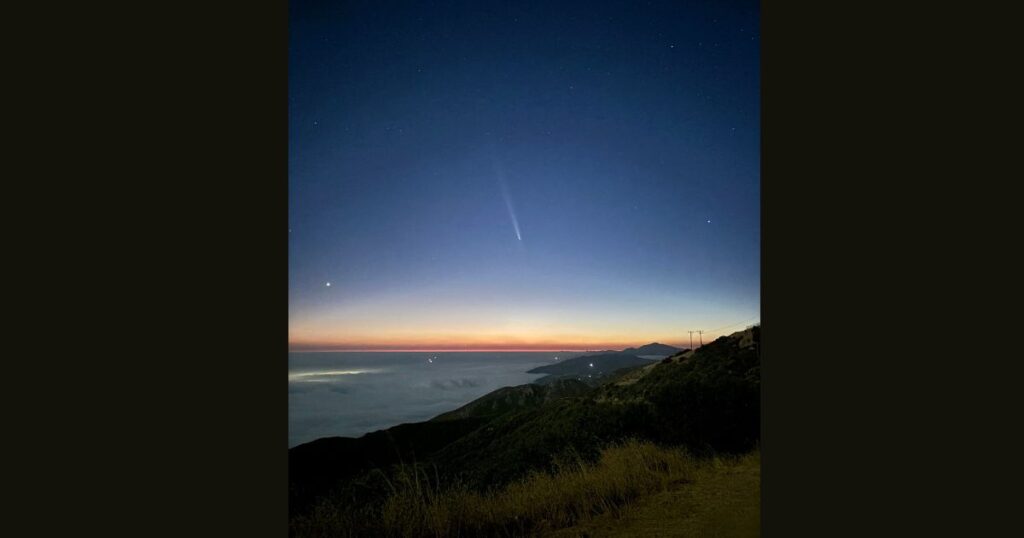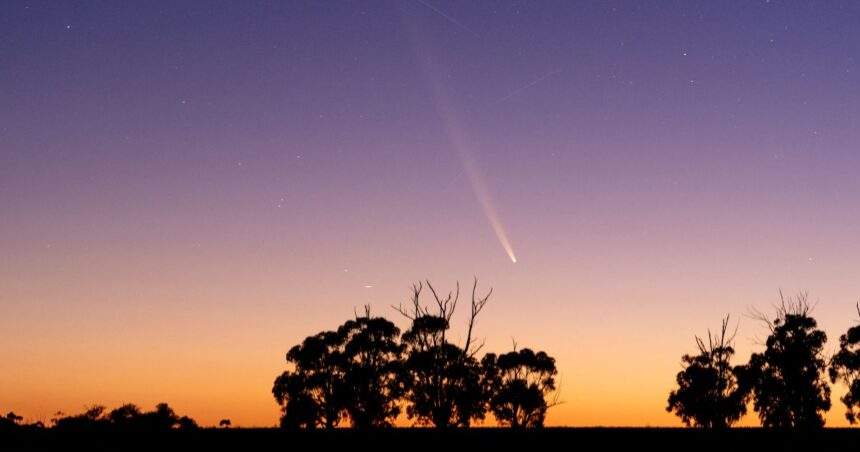Have you seen this Comet Tsuchinshan-ATLAS yet? It is still visible in the sky; if you have yet to see this comet, you still have a chance, but you must look as soon as possible.
Comet Tsuchinshan-ATLAS, also known as C/2023 A3. It was discovered in the year 2023 on January 9. It was first discovered by the Purple Mountain Observatory in China and later on, confirmed by ATLAS (Asteroid Terrestrial impact Last Alert System) on February 22, 2023. Since then, it has been orbiting the Sun very closer, causing its ice to melt and form a glowing comma and tail. That’s why it is visible to the naked eye but not for long.
Last Chance to See Through Naked Eye
The brightness of this comment is currently too high (magnitude of +0.5), which means anyone can see this comet without using a telescope, just with the naked eye. On September 27, it passed the perihelion at a distance of 58 million km and peaked its brightness on October 9 with a magnitude of +0.49, reported by the Comet Observation Database (COBS).

The brightness of this comet gradually decreases as the comet moves away from our Earth and the Sun. By the end of this October, it will likely be visible only through the binoculars. In November, the brightness of this comet will decrease to such an extent that you will need to use a telescope if you want to see this comet.
Best Time to See Comet Tsuchinshan-ATLAS
If you want to see the commentary, look west about 45 minutes after the sunset. It will be just below and to the right of Arcturus, a bright red star in the constellation Boötes. The best time to see this comet is after the twilight has faded but before the Moon rises. Because after that the full sky will be filled with the brightness of the Moon and you can’t see the comet.
The comet’s visibility is affected by several factors, including its intrinsic brightness, the sky’s darkness, and moonlight. The Moon is currently waxing towards a full Hunter’s Moon, which will make it harder to see the comet. However, the Moon will rise later by the weekend, providing darker skies for better viewing.

Comet Tsuchinshan-ATLAS, also known as C/2023 A3, is moving higher in the western sky each night, but it’s also getting fainter as it gets farther from Earth and the Sun. So, it’s the perfect time to catch a glimpse of this amazing celestial visitor before it disappears from view.
Take advantage of this rare opportunity to see Comet Tsuchinshan-ATLAS! Grab your binoculars or telescope and head outside to witness this amazing event. It’s a reminder of the beauty and wonder of the universe and a chance to connect with the cosmos in a truly special way.





